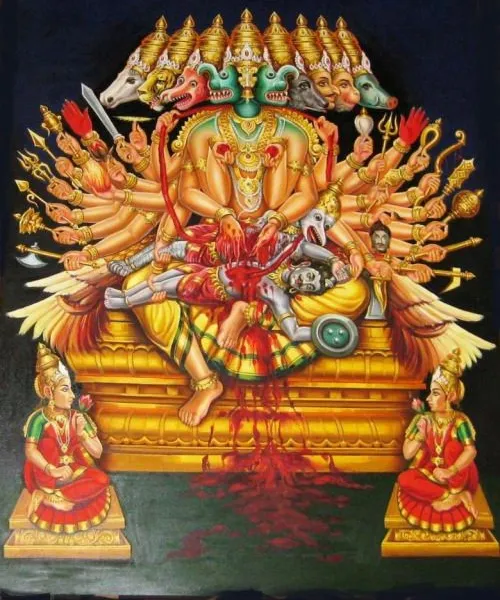
Harihara is a composite deity in Hinduism, combining the aspects of two major gods: Vishnu (Hari) and Shiva (Hara). The name “Harihara” is a combination of “Hari,” a name of Vishnu, and “Hara,” a name of Shiva. This combined form represents the synthesis of the two primary deities, emphasizing their underlying oneness and the non-dualistic nature of the ultimate reality.
Here are some key points about Harihara:
- Iconography: Harihara is often depicted with two distinct halves, with the right half representing Vishnu and the left half representing Shiva. Each half has characteristic attributes and symbols associated with the respective deities.
- Right Half (Vishnu): Typically depicted with four arms, holding a conch shell (shankha), a discus (chakra), a mace (gada), and a lotus flower (padma). Vishnu’s divine vehicle, the eagle Garuda, may also be depicted.
- Left Half (Shiva): Shiva’s attributes may include a trident (trishula), a drum (damaru), a crescent moon, and a serpent around the neck. Shiva’s divine bull, Nandi, may also be present.
- Symbolism: The combination of Vishnu and Shiva in Harihara symbolizes the harmony and unity of the two major sects within Hinduism, Vaishnavism (devotees of Vishnu) and Shaivism (devotees of Shiva). It reflects the understanding that these deities represent different aspects of the same divine reality.
- Philosophical Significance: Harihara is particularly significant from a philosophical standpoint, illustrating the concept of “Advaita” or non-dualism, which emphasizes the oneness of the ultimate reality (Brahman) beyond apparent distinctions.
- Worship: Devotees may worship Harihara in temples dedicated to this combined form, and the worship may involve rituals and prayers that honor both Vishnu and Shiva.
While Harihara is a synthesis of Vishnu and Shiva, it’s important to note that each of these deities also has their distinct forms and worship traditions within Hinduism. The depiction of Harihara serves to highlight the underlying unity of the diverse aspects of the divine in the Hindu philosophical and religious landscape.
